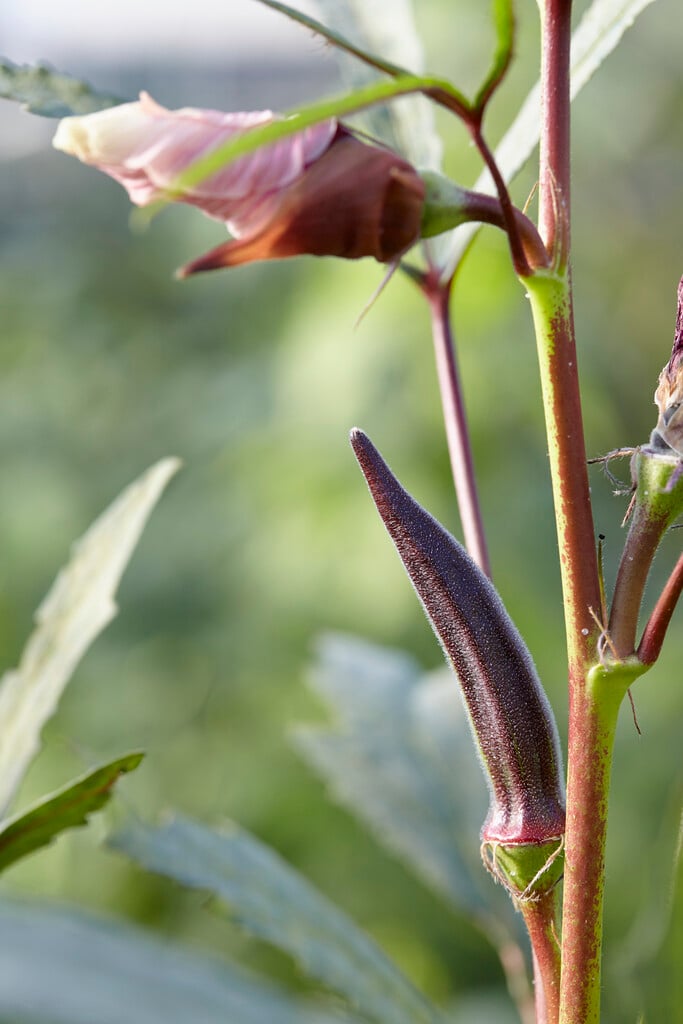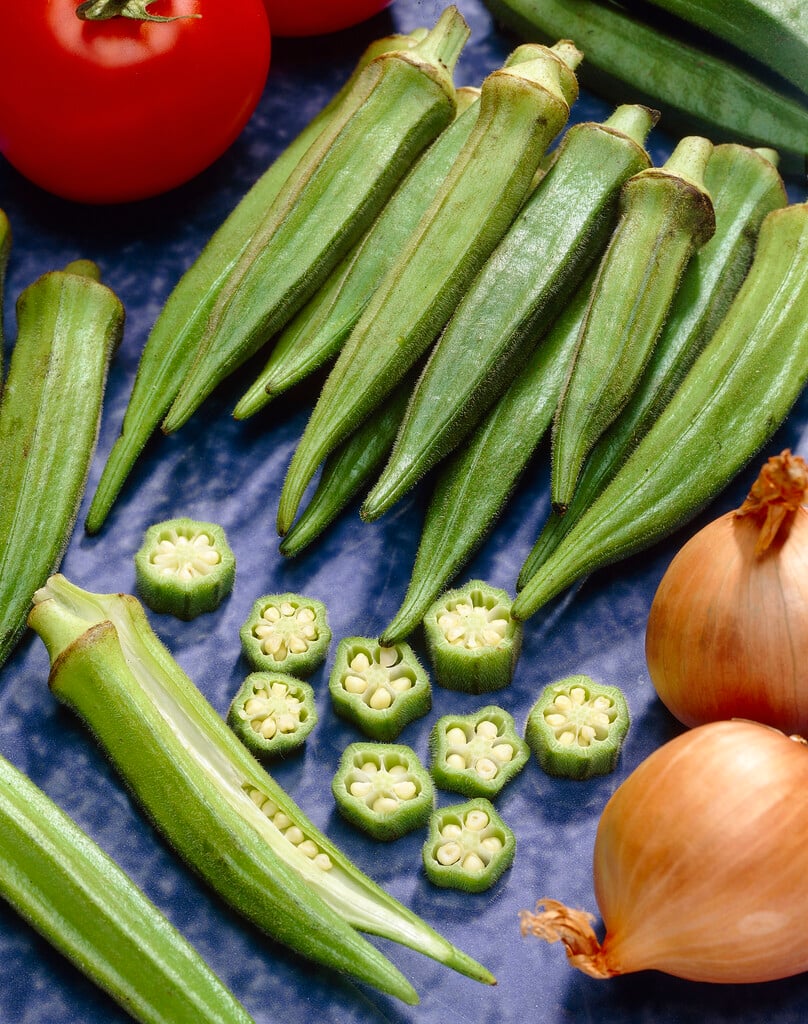Abelmoschus esculentus
okra
A deciduous perennial from tropical regions that is grown as an annual in temperate climates. It has hairy leaves deeply cut into 5-7 lobes and hibiscus-like pale yellow flowers to around 7cm wide with dark centres borne in summer and followed by edible, green seed pods
Size
Ultimate height
1–1.5 metresTime to ultimate height
1 yearUltimate spread
1–1.5 metresGrowing conditions
Moisture
Moist but well–drainedpH
Acid, Alkaline, NeutralColour & scent
| Stem | Flower | Foliage | Fruit | |
| Spring | Green | |||
|---|---|---|---|---|
| Summer | Yellow | Green | ||
| Autumn | Green | |||
| Winter |
Position
- Full sun
Aspect
South–facing
Exposure
Sheltered Hardiness
H2Botanical details
- Family
- Malvaceae
- Native to GB / Ireland
- No
- Foliage
- Deciduous
- Habit
- Bushy
- Genus
Abelmoschus are hairy annuals or perennials with large, usually palmately-lobed leaves and 5-petalled, hibiscus-like, flowers borne in the leaf axils or in terminal racemes
- Name status
Correct
How to grow
Cultivation
Best grown under glass or in a polytunnel but can be planted outside in a warm, sunny, sheltered position in a container or in the ground when soil temperature has risen to 15°C. See okra cultivation for further advice
Propagation
Propagate by seed. See sowing vegetable seeds
Suggested planting locations and garden types
- Cottage and informal garden
- Sub-tropical
- Edible fruit
- Conservatory and greenhouse
Pruning
No pruning required
Pests
May be susceptible to slugs, snails, glasshouse red spider mite and glasshouse whitefly
Diseases
May be susceptible to powdery mildews
Love gardening
Sign up to receive regular gardening tips, inspiration, offers and more
View our Privacy Policy
Get involved
The Royal Horticultural Society is the UK’s leading gardening charity. We aim to enrich everyone’s life through plants, and make the UK a greener and more beautiful place.

